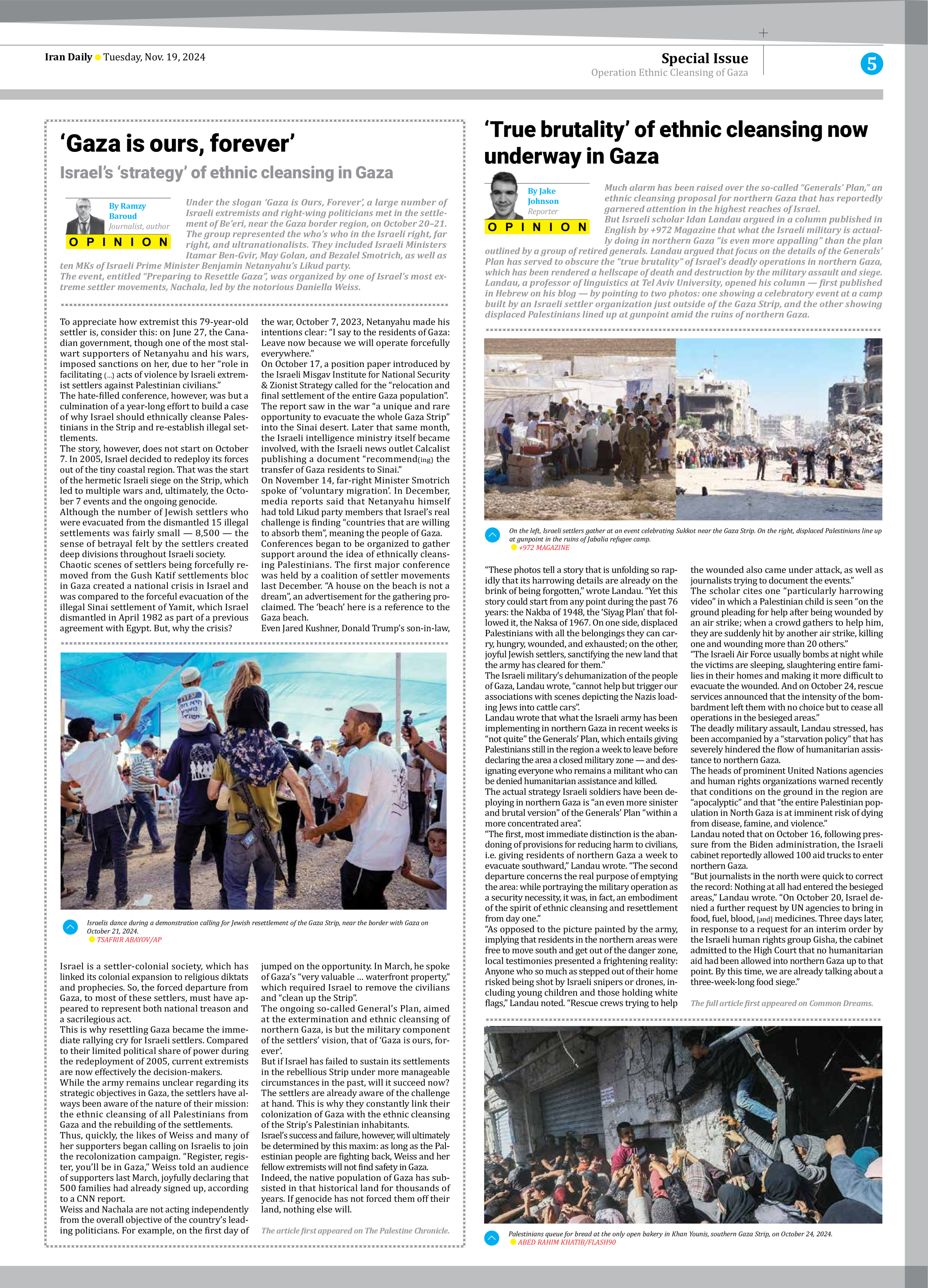
‘True brutality’ of ethnic cleansing now underway in Gaza
Much alarm has been raised over the so-called “Generals’ Plan,” an ethnic cleansing proposal for northern Gaza that has reportedly garnered attention in the highest reaches of Israel. But Israeli scholar Idan Landau argued in a column published in English by +972 Magazine that what the Israeli military is actually doing in northern Gaza “is even more appalling” than the plan outlined by a group of retired generals. Landau argued that focus on the details of the Generals’ Plan has served to obscure the “true brutality” of Israel’s deadly operations in northern Gaza, which has been rendered a hellscape of death and destruction by the military assault and siege. Landau, a professor of linguistics at Tel Aviv University, opened his column — first published in Hebrew on his blog — by pointing to two photos: one showing a celebratory event at a camp built by an Israeli settler organization just outside of the Gaza Strip, and the other showing displaced Palestinians lined up at gunpoint amid the ruins of northern Gaza.
By Jake
Johnson
Reporter
“These photos tell a story that is unfolding so rapidly that its harrowing details are already on the brink of being forgotten,” wrote Landau. “Yet this story could start from any point during the past 76 years: the Nakba of 1948, the ‘Siyag Plan’ that followed it, the Naksa of 1967. On one side, displaced Palestinians with all the belongings they can carry, hungry, wounded, and exhausted; on the other, joyful Jewish settlers, sanctifying the new land that the army has cleared for them.”
The Israeli military’s dehumanization of the people of Gaza, Landau wrote, “cannot help but trigger our associations with scenes depicting the Nazis loading Jews into cattle cars”.
Landau wrote that what the Israeli army has been implementing in northern Gaza in recent weeks is “not quite” the Generals’ Plan, which entails giving Palestinians still in the region a week to leave before declaring the area a closed military zone — and designating everyone who remains a militant who can be denied humanitarian assistance and killed.
The actual strategy Israeli soldiers have been deploying in northern Gaza is “an even more sinister and brutal version” of the Generals’ Plan “within a more concentrated area”.
“The first, most immediate distinction is the abandoning of provisions for reducing harm to civilians, i.e. giving residents of northern Gaza a week to evacuate southward,” Landau wrote. “The second departure concerns the real purpose of emptying the area: while portraying the military operation as a security necessity, it was, in fact, an embodiment of the spirit of ethnic cleansing and resettlement from day one.”
“As opposed to the picture painted by the army, implying that residents in the northern areas were free to move south and get out of the danger zone, local testimonies presented a frightening reality: Anyone who so much as stepped out of their home risked being shot by Israeli snipers or drones, including young children and those holding white flags,” Landau noted. “Rescue crews trying to help the wounded also came under attack, as well as journalists trying to document the events.”
The scholar cites one “particularly harrowing video” in which a Palestinian child is seen “on the ground pleading for help after being wounded by an air strike; when a crowd gathers to help him, they are suddenly hit by another air strike, killing one and wounding more than 20 others.”
“The Israeli Air Force usually bombs at night while the victims are sleeping, slaughtering entire families in their homes and making it more difficult to evacuate the wounded. And on October 24, rescue services announced that the intensity of the bombardment left them with no choice but to cease all operations in the besieged areas.”
The deadly military assault, Landau stressed, has been accompanied by a “starvation policy” that has severely hindered the flow of humanitarian assistance to northern Gaza.
The heads of prominent United Nations agencies and human rights organizations warned recently that conditions on the ground in the region are “apocalyptic” and that “the entire Palestinian population in North Gaza is at imminent risk of dying from disease, famine, and violence.”
Landau noted that on October 16, following pressure from the Biden administration, the Israeli cabinet reportedly allowed 100 aid trucks to enter northern Gaza.
“But journalists in the north were quick to correct the record: Nothing at all had entered the besieged areas,” Landau wrote. “On October 20, Israel denied a further request by UN agencies to bring in food, fuel, blood, [and] medicines. Three days later, in response to a request for an interim order by the Israeli human rights group Gisha, the cabinet admitted to the High Court that no humanitarian aid had been allowed into northern Gaza up to that point. By this time, we are already talking about a three-week-long food siege.”
The full article first appeared on Common Dreams.







